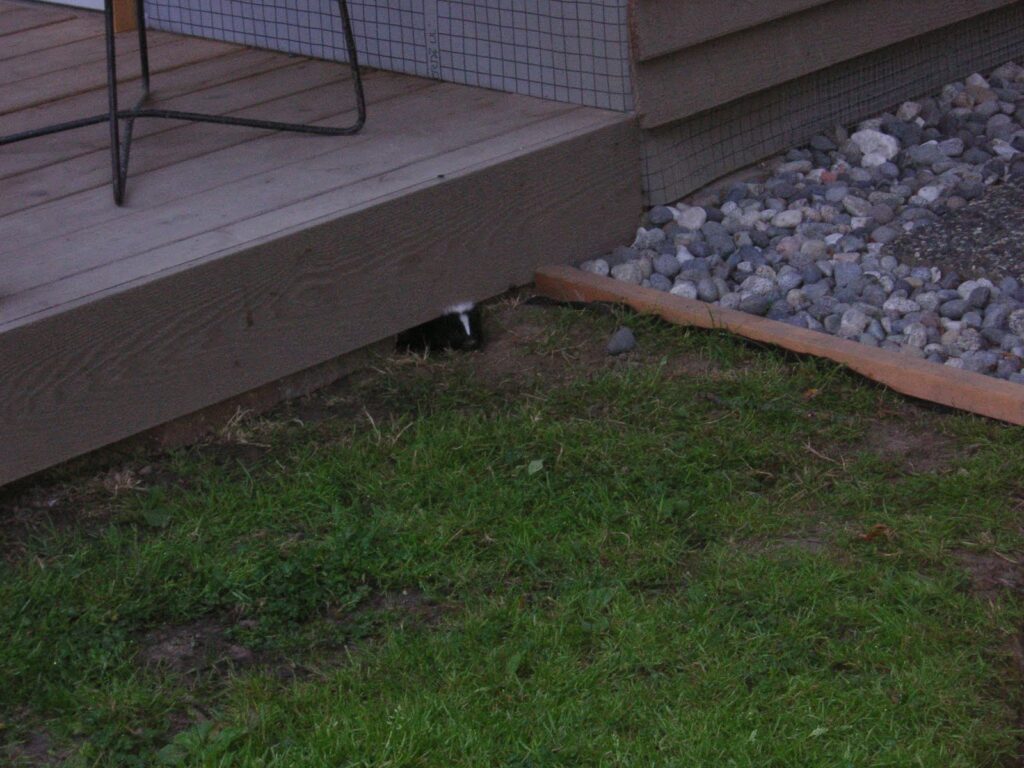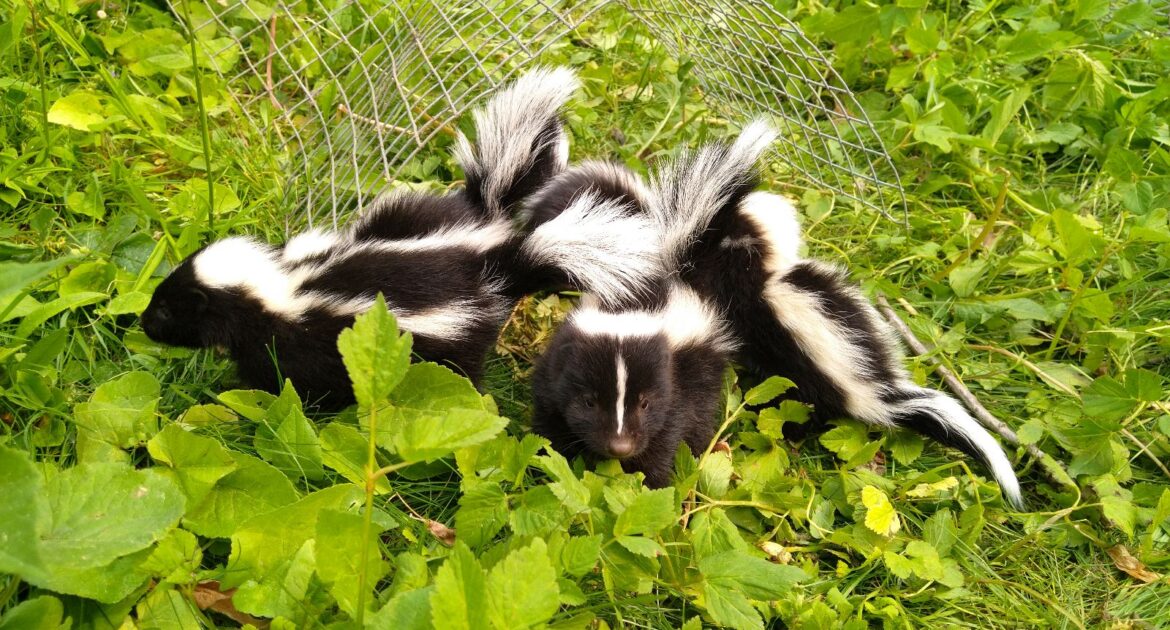Have you ever wondered why skunks have a white stripe or two on their backs? You may have additionally questioned why skunks don’t all have the same stripe pattern. Some have two stripes that look like a “V” shape, while others seem to be all white on top and black on the bottom. These markings are significant — but they may not mean what you think.
While skunks are harmless to humans and tend to simply want to keep their young safe above all else, their smell can’t be easily overlooked. Learn the purpose of skunk markings and determine how to keep these interesting (but pungent) animals away from your property during their mating season and beyond.
What Is the Purpose of a Skunk Stripe?
Many animals have elaborate markings, patterns, or feathers to denote their fierceness or superiority. Some creatures camouflage themselves to hide from predators. Skunks, on the other hand, likely developed their recognizable bright white stripes as a warning: These markings serve as arrows that point to the skunk’s anal glands.
The fact that skunks evolved to look this way means that anybody who sees a skunk will know it is a skunk. Most people and animals are very familiar with how skunks spray — and how they smell — when threatened.
What Kinds of Skunk Markings Are There?
In North America alone, there are several different skunk species. Each type of skunk stripe or marking pattern will look slightly different:
- Stripes: The striped skunk is common and prevalent across the United States and southern Canada. This type of skunk is about the size of a cat, and it will have two white stripes running the length of its back and tail.
- Spots: Have you ever seen a skunk with spots? The Eastern spotted skunk has characteristic white spots and swirls on a black coat. This type of skunk isn’t common in Canada.
- Hooding: The hooded skunk doesn’t have a true hood — it has a large, body-wide white stripe on its back and a fan-like black and white tail. This skunk may or may not have an additional white stripe on its face. You’ll typically only see this skunk in warmer climates such as the southwestern United States and Mexico.
Tips for Preventing a Skunk Infestation
Skunks mate in February and March and have litters of babies around April and May. This quick turnaround means that the mother skunk needs to find a nesting area immediately. Residential backyards and sheds often become prime locations for skunk dens.
Fortunately, the characteristic skunk stripe can make these animals easy to spot. Keep the following tips in mind whether you’re trying to prevent an infestation or keep a returning mother from using your home again for a nursery:
- Barricade Potential Den Areas
Skunks can’t climb trees, so they burrow under structures to create safe homes for their young. Look for areas like this around your property (maybe under your house, beneath your porch, or in the corner of your shed), fill in entrances, and consider adding wire mesh to the areas to prevent entry.
- Hide or Remove Attractants
Skunks, like many wild animals, will gladly dig through your trash for a quick meal. Make sure that your garbage and recycling bins are covered with pest-proof lids, and don’t leave pet food on your patio or deck.
- Install Yard Lighting With Motion Detection
This tip may not keep skunks away forever, but the surprise of a bright light in the middle of the night will certainly make them think twice about considering your yard to be a safe place for a den.

Skedaddle Offers Skunk Stripe Information and Humane Removal in the Niagara Area
At Skedaddle Humane Wildlife Control, we love educating our customers about the unique qualities of the animals that share our space including the infamous skunk stripe. Unfortunately, these animals can often come too close for comfort.
If you’re dealing with a skunk infestation or you’re wondering how to prevent a skunk infestation in Niagara, get in touch with us immediately to determine your next steps. We look forward to assisting you in humanely eradicating these unique (and smelly) residents from your property!




